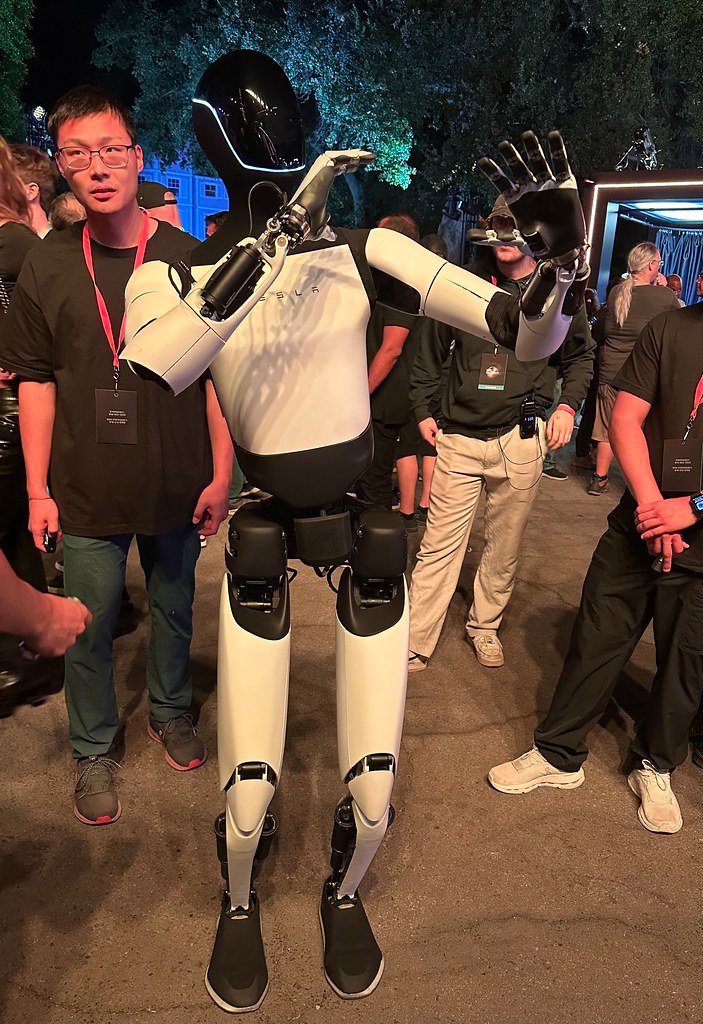You’ve been playing this game since childhood, confidently throwing scissors to beat paper or rock to crush scissors. But what if I told you that your unbeatable strategy, your carefully honed intuition, and even your most unpredictable moves have already been decoded by a machine? The truth is both fascinating and slightly unsettling: artificial intelligence has not only figured out how to beat humans at rock, paper, scissors, but it’s doing so with remarkable consistency.
The Shocking Reality of Human Predictability

Despite our best efforts to be random, humans are surprisingly predictable creatures when it comes to rock, paper, scissors. Researchers have discovered that we follow unconscious patterns that can be mapped and exploited.
Most people throw rock about 35.4% of the time, paper 33.3%, and scissors 31.3%. This slight bias toward rock stems from our psychological association with strength and aggression. Even more telling, when people lose a round, they tend to switch to the option that would have won the previous round – a behavior called “win-stay, lose-shift.”
These patterns become even more pronounced under pressure. Tournament players often fall into predictable sequences, especially when stakes are high. The human brain, trying to outsmart itself, actually becomes more systematic in its attempts to be random.
Enter the Machine Learning Revolution

Computer scientists realized that if humans aren’t truly random, then machines could potentially gain an advantage by learning these patterns. The breakthrough came when researchers began applying machine learning algorithms to analyze thousands of rock, paper, scissors games.
These systems don’t just look at single moves – they analyze sequences, timing, and even the context of previous games. By processing vast amounts of data, they can identify subtle patterns that escape human notice. What emerges is a predictive model that can forecast your next move with startling accuracy.
The key lies in understanding that true randomness is nearly impossible for humans to achieve. Our brains are pattern-seeking machines, and even when we think we’re being unpredictable, we’re actually following complex but detectable rules.
The Tokyo University Breakthrough

In 2012, researchers at Tokyo University created a robotic system that achieved a 100% win rate against human opponents. But here’s the twist – it wasn’t about predicting human behavior at all. Instead, the robot used high-speed cameras and lightning-fast processing to recognize the shape of a human hand in just one millisecond.
The system could identify whether a human was forming rock, paper, or scissors before the person had fully committed to the gesture. Then, within three milliseconds, it would form the winning counter-move. This wasn’t prediction – it was superhuman reaction time.
While this might seem like cheating, it demonstrates the incredible potential of machines to process information faster than human perception. The robot essentially eliminated the element of chance by operating in a timeframe where human movements become telegraphed and predictable.
Pattern Recognition in Human Behavior

Beyond physical reaction time, machines excel at identifying the psychological patterns that govern human decision-making. Studies have shown that people often follow strategies based on their personality, cultural background, and even their emotional state.
Aggressive players tend to favor rock, while analytical types often choose paper. Players who consider themselves clever frequently opt for scissors, believing it’s the least expected choice. These tendencies create exploitable patterns that machine learning algorithms can detect and capitalize on.
The most sophisticated systems even account for how players adapt their strategies during a game. They can recognize when someone is trying to break their own patterns and adjust their predictions accordingly. It’s like having a psychological profile that updates in real-time.
The Statistics Behind the Machine’s Success

Research conducted across multiple studies shows that trained algorithms can achieve win rates of 55-65% against human opponents. While this might not sound overwhelming, it represents a significant statistical advantage in a game that should theoretically be pure chance.
In controlled environments, some systems have achieved even higher success rates. The World Rock Paper Scissors Society has documented cases where AI systems maintained win rates above 70% across hundreds of games. These numbers become even more impressive when you consider that random chance would yield a 33.3% win rate.
The consistency of these results across different human opponents suggests that the patterns machines detect are universal aspects of human psychology rather than individual quirks. This points to something fundamental about how our brains process decision-making under uncertainty.
Learning from Millions of Games

Modern AI systems have been trained on datasets containing millions of rock, paper, scissors games. This massive training allows them to identify patterns that would be impossible for humans to detect manually. The systems learn not just what moves are most common, but when they’re most likely to occur.
These datasets include games from professional tournaments, casual online matches, and controlled laboratory experiments. The diversity of data sources helps the AI understand how human behavior varies across different contexts and pressure levels.
What’s particularly impressive is how quickly these systems can adapt to new opponents. Some algorithms can identify a player’s tendencies within just 10-15 games, then exploit those patterns for the remainder of the match. It’s like having a chess grandmaster who specializes in reading human psychology.
The Psychology of Overthinking

One of the most fascinating discoveries in machine versus human rock, paper, scissors research is how overthinking actually makes humans more predictable. When people try too hard to be random, they often create more complex patterns that machines can detect even more easily.
This phenomenon occurs because the human brain has limited processing power for generating truly random sequences. When we consciously try to avoid patterns, we often create meta-patterns – patterns within our attempts to break patterns. Machines excel at detecting these higher-order structures.
The irony is that the more strategic a human player becomes, the more vulnerable they are to machine prediction. The players who perform best against AI systems are often those who make quick, intuitive decisions without overthinking their choices.
Real-World Applications Beyond Gaming

The technology behind rock, paper, scissors-beating machines has applications far beyond entertainment. The same pattern recognition abilities are being used in financial markets to predict trading behavior, in cybersecurity to identify human-generated passwords, and in psychology research to understand decision-making processes.
Marketing companies are using similar algorithms to predict consumer behavior, while sports analysts employ them to anticipate strategic decisions by coaches and players. The underlying principle – that humans are more predictable than they realize – has broad implications across many fields.
Perhaps most intriguingly, these systems are being used to study the fundamental nature of human consciousness and free will. If machines can predict our “random” choices, what does this say about the nature of human decision-making?
The Speed Factor: Reaction Time vs. Prediction

While pattern recognition is impressive, the most consistently successful machine systems rely on superhuman reaction times. These systems can process visual information and execute responses in timeframes that make human reaction seem glacial by comparison.
The average human reaction time is about 200-300 milliseconds. Advanced robotic systems can observe, analyze, and respond in under 5 milliseconds. This means they can literally see your move developing and counter it before you’ve completed the gesture.
This speed advantage represents a qualitatively different kind of superiority. It’s not about being smarter or more strategic – it’s about operating in a different timeframe entirely. From the machine’s perspective, human movements unfold in slow motion, telegraphing intentions long before they’re executed.
Cultural Variations in Predictability

Researchers have discovered that cultural background significantly influences rock, paper, scissors patterns, and machines are learning to exploit these differences. For example, players from cultures that emphasize harmony tend to avoid rock, while those from competitive cultures favor it.
These cultural patterns create additional layers of predictability that sophisticated AI systems can leverage. By incorporating demographic data, some systems can adjust their strategies based on their opponent’s likely cultural background, achieving even higher win rates.
The implications extend beyond gaming into cross-cultural psychology and behavioral economics. Understanding these patterns helps us grasp how cultural conditioning influences seemingly random decisions in ways we don’t consciously recognize.
The Tournament Circuit Goes Digital

Professional rock, paper, scissors tournaments have begun incorporating machine opponents as both training tools and exhibition matches. The results have been humbling for human competitors, with even world champions struggling to maintain positive win rates against advanced AI systems.
These tournaments have revealed that human intuition, long considered the key to high-level play, is actually a liability against machines. The subtle psychological reads that separate amateur from professional players become predictable patterns for AI systems to exploit.
However, some human players have begun developing “anti-machine” strategies, attempting to play in ways that confuse algorithmic prediction. This has led to an interesting arms race between human creativity and machine learning, with each side pushing the other to evolve new approaches.
The Neuroscience of Decision Making

Brain imaging studies conducted during rock, paper, scissors games have revealed the neural mechanisms behind human predictability. The prefrontal cortex shows distinct activation patterns before different moves, and these patterns are consistent enough that machines can potentially read them.
This research suggests that our decisions are formed in the brain before we’re consciously aware of them. Machines detecting these patterns aren’t just analyzing behavior – they’re essentially reading our unconscious intentions as they form.
The implications for neuroscience are profound. If machines can predict our choices by analyzing our patterns, they might be accessing something fundamental about how consciousness and decision-making work at the neural level.
Online Platforms and Big Data

The internet has created vast datasets of rock, paper, scissors games, providing unprecedented training material for machine learning systems. Online platforms have recorded millions of games, creating a treasure trove of human behavioral data.
These platforms have also enabled researchers to study how human behavior changes across different contexts – casual play versus competitive matches, anonymous versus identified opponents, and varying stake levels. The patterns that emerge are consistent enough to be exploitable by AI systems.
Some online platforms now offer AI opponents that adapt their strategies in real-time, learning from each game to become more effective against specific players. These systems can identify individual playing styles within just a few rounds and adjust their approach accordingly.
The Mathematics of Probability

The mathematical foundation behind machine success in rock, paper, scissors lies in probability theory and game theory. While humans intuitively understand that each option should be chosen one-third of the time, we consistently deviate from this optimal strategy in predictable ways.
Game theory suggests that the optimal strategy is to choose each option with equal probability and independence. However, human psychology makes this impossible to achieve consistently. We’re influenced by recent outcomes, emotional states, and cognitive biases that create exploitable patterns.
Advanced AI systems use sophisticated probability models that account for these human limitations. They can calculate the likelihood of each possible move based on historical data and current game context, then choose the optimal counter-move to maximize their winning probability.
Evolutionary Perspectives on Strategy

From an evolutionary standpoint, the patterns that make humans predictable in rock, paper, scissors might have been adaptive in other contexts. Our tendency to favor certain options under pressure, or to respond to losses with specific strategies, may have been useful in ancestral environments.
However, these evolved decision-making patterns become liabilities when facing systems designed specifically to exploit them. Machines don’t have the same evolutionary baggage and can approach the game from a purely mathematical perspective.
This creates an interesting parallel to other domains where human intuition, shaped by evolution, proves inadequate against designed systems. It’s a reminder that human cognition, while remarkable, wasn’t optimized for all possible challenges.
The Future of Human-Machine Competition

As machine learning continues to advance, the gap between human and artificial intelligence in rock, paper, scissors will likely continue to widen. Future systems may incorporate additional data sources, such as biometric monitoring or even brain scanning, to achieve even higher prediction accuracy.
However, this progression also raises interesting questions about the nature of competition and fairness. If machines can predict human behavior with near-perfect accuracy, does the game retain any meaning as a contest? Or does it become more like a demonstration of technological capability?
The ongoing development of human-machine interfaces might eventually level the playing field by augmenting human decision-making with computational support. This could lead to new forms of competition where enhanced humans face off against artificial intelligence systems.
What This Reveals About Human Nature

The success of machines in rock, paper, scissors illuminates something profound about human nature: we’re far more predictable than we’d like to believe. Our attempts at randomness are constrained by psychological patterns that reflect deeper aspects of how our minds work.
This predictability isn’t necessarily a weakness – it’s a consequence of having brains that evolved to find patterns and make sense of the world. The same cognitive processes that make us predictable in games also enable us to navigate complex social situations and make rapid decisions based on limited information.
Understanding these limitations helps us appreciate both the remarkable capabilities of human cognition and the unique advantages that artificial intelligence can provide. It’s not about machines being superior to humans, but about different types of intelligence being suited to different kinds of challenges.
The Ultimate Implications

The fact that machines can consistently beat humans at rock, paper, scissors represents more than just a technological curiosity. It’s a window into the fundamental nature of human decision-making and the potential for artificial intelligence to understand and predict human behavior.
These systems aren’t just playing games – they’re learning to read human psychology in real-time. The same technologies that can predict your next move in rock, paper, scissors might eventually be applied to understanding human behavior in much more complex and consequential contexts.
As we continue to develop more sophisticated AI systems, the lessons learned from this simple game will undoubtedly inform more significant applications. The machine that beats you at rock, paper, scissors today might be the foundation for systems that understand human behavior in ways we’re only beginning to imagine.
Beyond the Game

The next time you play rock, paper, scissors, remember that you’re not just making a simple choice – you’re revealing something about the fundamental nature of human consciousness and decision-making. Your patterns, invisible to you, are part of a larger story about how minds work and how artificial intelligence is learning to understand us.
The machines have already won this particular battle, but perhaps the real victory lies in what we’ve learned about ourselves in the process. Every game reveals new insights into the beautiful complexity of human psychology and the remarkable capabilities of artificial intelligence.
The question isn’t whether machines will continue to beat us at rock, paper, scissors – they already do. The question is what we’ll discover about ourselves as they become even better at reading the patterns we didn’t know we were creating. Did you expect that your childhood game would become a window into the nature of human consciousness itself?


